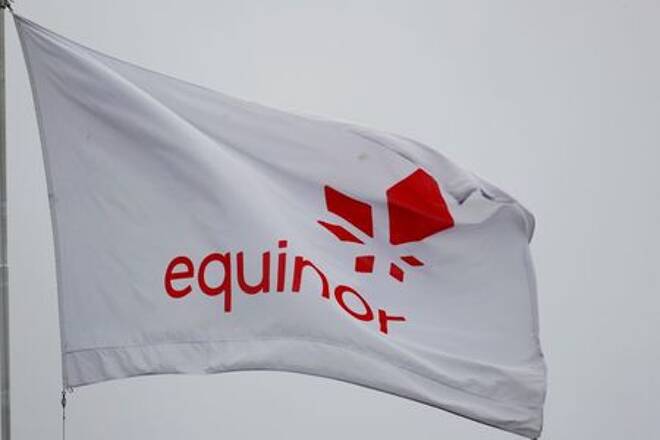Advertisement
Advertisement
Norway’s Equinor Playing a Double Game, Oil and Gas to Support Renewables
Published: Jun 15, 2021, 11:04 GMT+00:00
Equinor has now reported that its latest plans to increase renewable energy will entail still a growth, not a decrease, of its oil and gas production in the mid-term.
Even that Norway’s pension-fund Government Pension Fund Global ( Statens pensjonsfond Utland, SPU), also known as the Oil Fund, and Norway’s state-owned oil and gas giant Equinor (former Statoil) are making headlines due to its energy-transition and renewables approach, the hidden truth of both is oil and gas needed to finance the transition. International media seem to have still a very subjective interpretation of the Norwegian dream, showing a multitude of articles on the country’s leading EVs position and the ‘shocking hydrocarbon divestments’ of its pension-fund. Reality is however starkly different, Europe’s largest oil and gas producer is still continuing major investments in upstream, licensing rounds continue and even Arctic oil and gas reserves are not out of reach.
Equinor has now reported that its latest plans to increase renewable energy will entail still a growth, not a decrease, of its oil and gas production in the mid-term. The hydrocarbon giant’s strategy update today gives detailed plans to accelerate its transition to a lower-carbon future, targeting a 50% investment in renewables and low-carbon technology by 2030, which is an exponential increase compared to its 4% in 2020.
The company also has brought forward its targets to reach 12-16GW of installed renewables capacity by 2030 from 2035. However, internal rates of return on its renewables projects have been brough down from 6-10 percent to 4-8 percent. To soften this blow Equinor indicated that offshore wind in the US and UK could hit a 12-16 percent level. The company also steps up its CCS capacity to 15-30 million tons per year of CO2 storage by 2035.
The latter will be represented in mainstream media again as the main story, but Equinor continues in full force its oil and gas operations too. Even that the company has set itself a Net Zero by 2050 target, it also stated in its guidance that oil and gas output will grow by 3 percent per year until 2026. At the same time, looking at ongoing investments and plans, there will be new projects coming on stream by 2030, with a break-even price of $35 per barrel, showing a pay-back time of less than 2.5 years.
In a media statement, Equinor’s CEO Anders Opedal made a diffuse statement. “In the longer term, Equinor expects to produce less oil and gas than today recognizing reducing demand”. The latter doesn’t mean lower oil and gas production in case of higher demand in reality. He reiterated that he expects lower demand due to growth of renewables and low-carbon solutions after 2030-2035. Taking this into account, major investments upstream are still to be expected at least for 5-10 years.
Equinor also has joined the “Shell-League” it seems, as Norwegian activists are taking the company to the European Court of Human Rights. Based on the Dutch court order for Shell, which was also based on international human rights, which will be contested for sure by Shell, Norwegian parties now want to block Arctic oil drilling too. The main argument of the environmental organizations is that allowing new oil drilling during a climate crisis breaches fundamental human rights.
They also are using the IEA report Net Zero by 2050 as backing. The latter however is not likely to be a legal ground for a case, as the former oil and gas agency is not a main party in all, while its reports legally can be disputed without any trouble. Green Peace Norway’s leader Frode Pleym however thinks different, as he stated that “the oil industry and the oil-friendly parties’ bible has been the IEA reports….The IEA has now been clear on what we need to do to achieve the goals from Paris: that is to stop exploring for more oil.” Since years Norway is fighting legal battles with environmentalists on drilling licenses in the Barents Sea. One field is at present producing, but several are under development, all by Equinor ASA, Aker BP ASA, Var Energi AS and Lundin Energy AB
At the same time that Equinor published his guidance, news also emerged about a new oil discovery by the company. The report states estimated recoverable resources of 1.3 to 3.6 million standard cubic meters of oil equivalent in production license 554 in North Sea. The discovery was made by Equinor, Vår Energi and Aker BP on the Garantiana West prospect near the Visund field in Norwegian North Sea. The discovery will be a tie-in to the planned Garantiana field development project. Proven in 2012 and delineated in 2014, Garantiana is a discovery in the northern part of the North Sea, 15km north of the Visund field.
The Norwegian approach towards oil and gas in energy transition is a clear cut Scandinavian approach. As Denmark also has pushed its oil and gas reserves production to the limit to pay for energy transition and renewables, Norway is keeping in line. Other oil and gas majors are having another strategy it seems, they are choosing for divestments of mainstream assets to lower their carbon-footprint. In the greater play of things, the Scandinavian option is more realistic, as the other (Shell, BP, Total ao) are only divesting plays, which are going to be picked up by competitors or private-equity. The impact of the latter on the environment or energy transition is negligible.
For a look at all of today’s economic events, check out our economic calendar.
About the Author
Cyril Widdershovenauthor
Dr. Widdershoven is a veteran Energy market expert and holds several advisory positions at various international think-tanks and global Energy firms.
Advertisement
